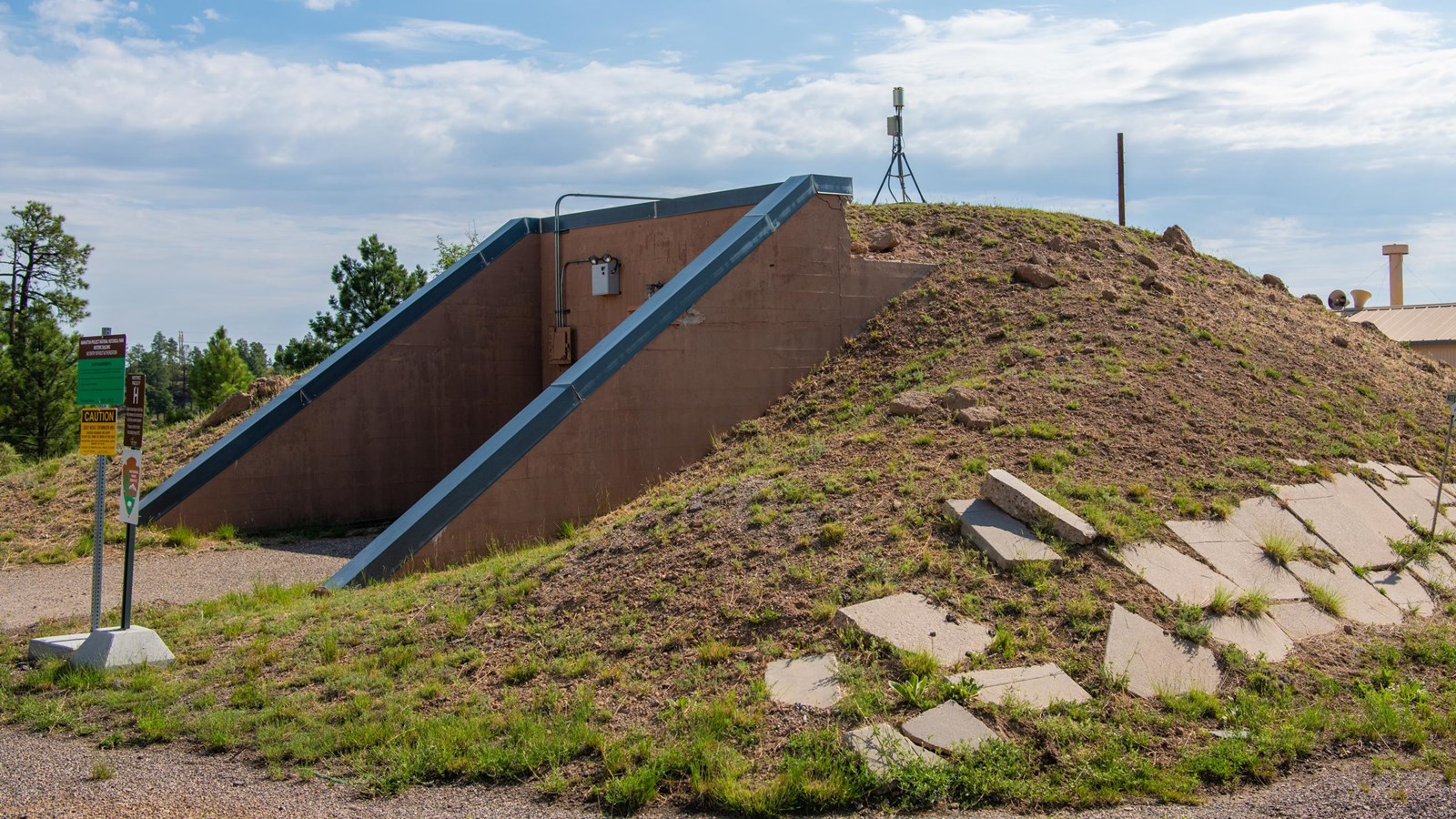Last updated: March 15, 2022
Place
K-Site

LOS ALAMOS NATIONAL LABORATORY
This site is on Los Alamos National Laboratory property and cannot be accessed by members of the public.
The betatron method, one of many diagnostic tests Project Y developed to study implosion, involved detonating an implosion between two buildings. One building housed a betatron machine, which emitted X-rays at the instant of the explosion. The other building recorded test data in a cloud chamber.
K-Site takes its name from Donald Kerst, the physicist who headed the studies here. He had developed the betatron while working as an instructor at the University of Illinois. His work there, and his reputation as a capable physicist and engineer, prompted Dr. J. Robert Oppenheimer to bring him to Los Alamos. When Kerst first joined the project in 1943, he took charge of the P-7 Group. P-7 focused on creating the Water Boiler, a nuclear reactor that allowed scientists to test tamper materials and critical mass calculations. In August of 1944, when the laboratory restructured to focus work on developing an implosion-type weapon, Kerst took a new role in the Gadget (G) Division. G-5, charged with Betatron testing, took their first betatron photos of an implosion on January 15, 1945.
Continue Your Journey
Behind the fence, near K-Site, L-Site and Q-Site were critical locations for studying and understanding implosion. Learn more about the history of the Manhattan by visiting the Bradbury Science Museum! The museum’s interactive exhibits share stories from the project and provide a glimpse of other “behind the fence” historical sites.
